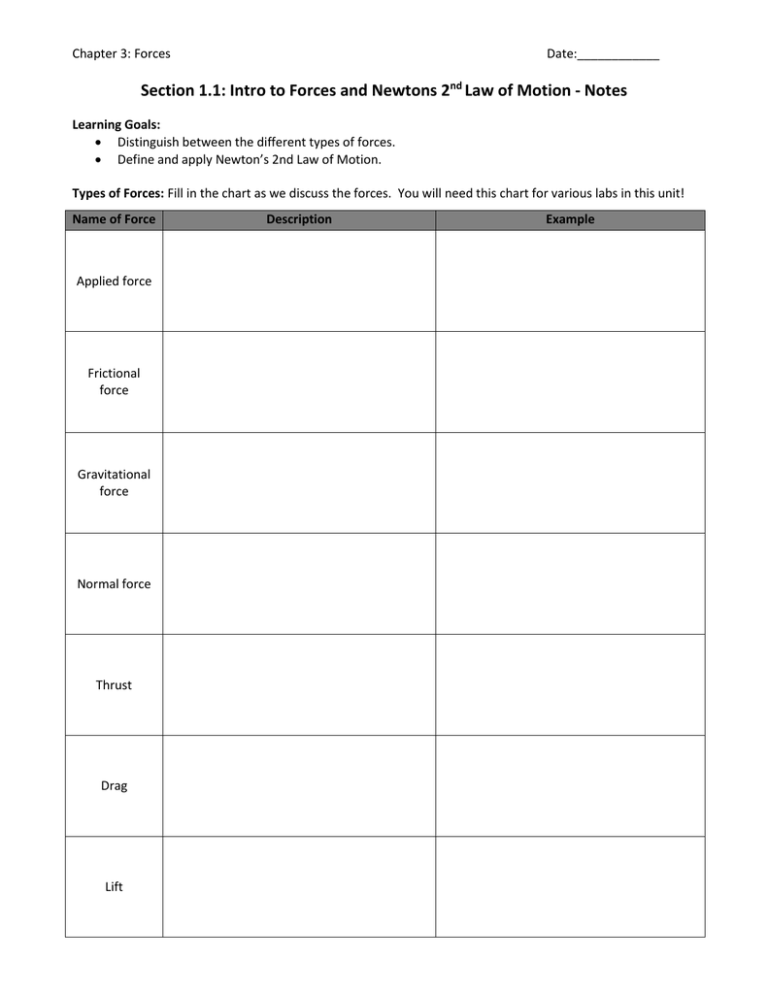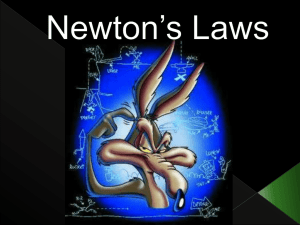Section 1.1: Intro to Forces and Newtons 2
advertisement

Chapter 3: Forces Date:____________ Section 1.1: Intro to Forces and Newtons 2nd Law of Motion - Notes Learning Goals: Distinguish between the different types of forces. Define and apply Newton’s 2nd Law of Motion. Types of Forces: Fill in the chart as we discuss the forces. You will need this chart for various labs in this unit! Name of Force Applied force Frictional force Gravitational force Normal force Thrust Drag Lift Description Example Newton's Laws of Motion: Published _________________________________________ in 1687. Describe the effects of _______________________________ on the motion of objects. 1st Law of Motion: o An object moving at a constant velocity _______________________________________ _________________________________________ unless an unbalanced force acts on it. o An object at rest ______________________________________________________ unless an unbalanced force acts on it. 2nd Law of Motion: o ___________________________________________: the acceleration of an object is in the same direction as the net force on the object. o Also states that acceleration is equal to the ________________ divided by ____________ o An object will have greater acceleration if a greater ________________ is applied to it. o The _____________ of the object also affects ___________________________. Using Newton's 2nd Law: Force = mass / acceleration o F= o m= o a= mass = acceleration = Practice: 1. Engineers must determine the net force needed for a rocket to achieve an acceleration of 70 m/s2. If the mass of the rocket is 45,000 kg, how much net force must the rocket develop? 2. What is the mass of a truck if it produces a force of 14,000 N while accelerating at a rate of 5 m/s2 ? 3. If the mass of a helicopter is 4,500 kg, and the net force on it is 18,000 N, what is the helicopter’s acceleration?


